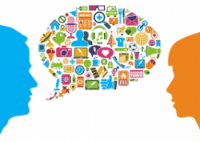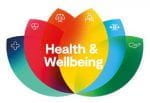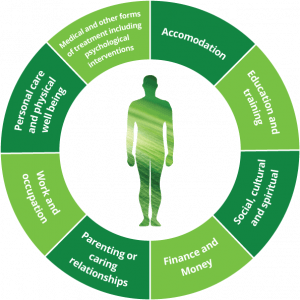
Good communication skills are one of the most important factors when interacting with others, when providing a service and delivering person-centred care.
Communication is the transfer and exchange of information between at least two individuals (Help Guide, 2019). This can happen in a multitude of ways and can be verbal or non-verbal. For communication to be effective it is important to know the aims and the meaning of the communication and this must be shared and relayed correctly as well as being accurately received and understood (Bach and Grant, 2012) (Crawford, Brown and Bonman,2006).
Verbal communication is words that are spoken. Words need to be chosen with the intent of making the message clear and concise.
Non-verbal communication includes eye contact or use of body language such as hand gestures. Tactile communication such as touch, as well as written or digital are also non-verbal forms of communication.
Para-verbal is how the words are spoken. This can be the in the tone used, pace, volume and the emotion relayed in the speech such as happy, sad or angry. A statement can be conveyed with a different meaning depending on the emphasis of the words and the tone. It is how something is said rather than how something is said as to how it is received (CADRE, 2017).
Tailoring communication
Tailoring is the process of individualising and customising communication to meet the needs of the individual or people receiving (WHO, 2020). This can be achieved by adjusting language, timings, pace,
Barriers to communication
Alongside positive communications there are many barriers to effective communication. These barriers can include age, disability, health, emotional, socio-economic group, environment, race, religion or cultural group including personal cultural bias (McDaniel et al, 2009) and this can mean that the communication is not received, not understood or altered in some way due to various factors (Aldworth et al, 2010).
For the purpose of this discussion age, disability and environment will be applied.
Age both young and older can create many barriers to communication. These can include a variation in cognitive ability meaning that all ages will have differences in how they think and how they interpret the communication (Lindon, 2012). With children this could mean that if age appropriate language is not used, not enough time is allowed for a child to reply or understand the communication, a child is not given enough responsibility (thinking their adult or carer has more credence) and underestimating or over estimating emotional maturity this can create a barrier to effective communication. These barriers can also apply to any age depending on the cognitive ability and form of communication. So for effective communication it is necessary to assess and ensure the individual and the content is thought about so the message being transmitted takes into consideration the age, avoiding age related barriers (Bach and Grant, 2012).
Disability as a barrier to communication comes in many forms. Certain disabilities are often complicated, with a speech and language difficulty or completely non verbal alongside a sensory impairment including visual or hearing. Physical disabilities and symptoms can produce barriers including . Visual Ways to overcome barriers to communication within disability can include technological aids including phones and devices to enable communication to be in the form of text messages, social media or email or human aids such as an interpreter or signer giving sign language (Alworth et al, 2010) (Dalrymple and Willis, 2020) (Thomas and Woods, 2005).
Environmental barriers to communication include distractions such as noise, other people resulting in reduced privacy, the weather or room temperature creating an uncomfortable environment. Poor lighting can cause a barrier and interference to effective communication, for example because communication is also non verbal, if lighting is poor it could prove more difficult to read facial expressions or make eye contact, placing a barrier to the interpretation of the communication (Aldworth et al, 2010)
All of these factors can be interlinked having an influence on effective communication.
References
Aldworth, C. Billingham, M. Lawrence, P. Moonie, N. Stretch, B. Talma, H. Whitehouse, M. (2010) Health and Social Care Level 3 Book 1 BTEC National Essex Pearson Education Ltd
Bach. S. and Grant. A, (2012) Communication and Interpersonal Skills in Nursing (2nd Ed) Exeter Learning Matters Ltd
Centre for Appropriate Dispute in Resolution Education The (CADRE) (2017) Communication Skills available at https://www.cadreworks.org/resources/communication-skills (accessed: 08.10.20)
Crawford, P. Brown, B. and Bonman, P. (2006) Communications in Clinical Settings Cheltenham Nelson Thornes Ltd
Dalrymple, R. and Willis, S. (2020) Fundamentals of Paramedic Medicine (2nd Ed) Sussex John Wiley and Sons Ltd
Gov (2019) The Charity Commission available at https://www.gov.uk/government/organisations/charity-commission (accessed: 04.12.19)
Lindon, J. (2012) Understanding Child Development 0-8 years (3rd Ed) London Hodder Education
McDaniel, E. Porter, R. Samovar, L. (2009) Communication between cultures (7th Ed) Boston Nelson Education Ltd
Raising Funding (2019) Advantages and disadvantages of establishing a charity available at http://www.raisingfunding.co.uk/advantages-disadvantages-establishing-charity.html (accessed: 06.12.19)
Stroke Association (2019) Who we are available at https://www.stroke.org.uk (accessed: 03.12.19)
Thomas, D. and Woods, H. (2005) Working with People with Learning Disabilities London Jessica Kingsley Publishers


